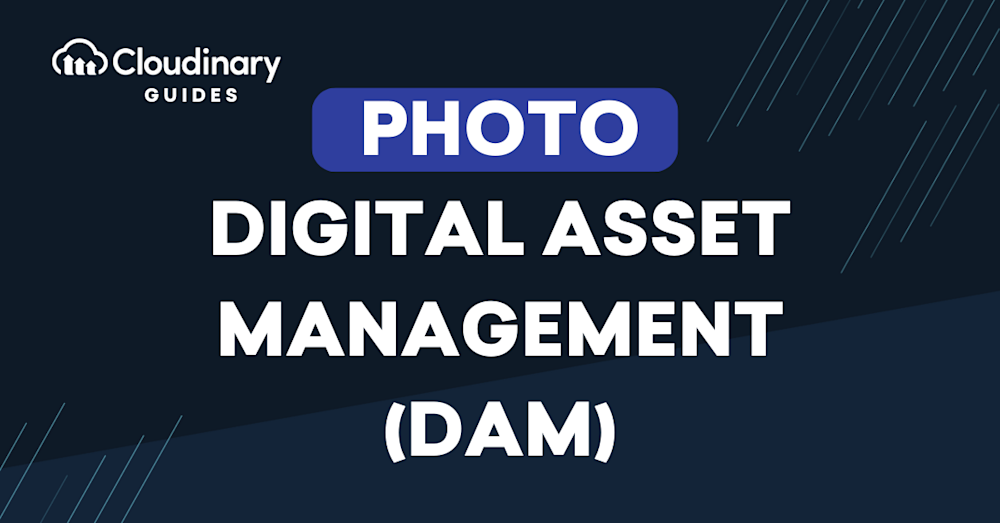
In today’s fast-paced business environment, where digital assets are rapidly becoming the backbone of operations, having a reliable photo digital asset management (DAM) tool is no longer an option but a necessity. From simplifying workflows to improving collaboration and enhancing security, a DAM system provides businesses the tools to stay ahead of the competition and succeed in the digital age.
This article provides an overview of digital asset management, its benefits, and some of the most popular DAM tools available today.
Understanding Photo Digital Asset Management
Photo Digital Asset Management is all about organizing, storing, and finding digital files like images, videos, and other multimedia. These systems help by creating a central place for these files, making it easy for people and teams to use, share, and work together on their digital content. Marketing teams find these tools helpful because they make the creative process smoother and ensure everyone can access the right materials.
DAMs are great for marketing teams because they offer one central place for all digital content. This helps avoid using old or incorrect materials and ensures everyone works with the same files. Plus, they often work together with other marketing tools, like content management systems or marketing automation platforms, making marketing tasks even smoother. By making managing digital assets easier and more organized, they save time, cut costs, and improve marketing results.
How You Can Streamline Your Workflow
Efficient workflows are vital for marketing teams in the digital landscape. These strategies enhance productivity and ensure effective management of digital assets in marketing campaigns. Let’s take a closer look at some of the ways you can streamline your processes, with and without a DAM.

Centralized Storage
Centralized storage is vital in managing digital assets like images, videos, and multimedia for marketing teams. It brings all digital files together in one accessible location, making it easier for team members to collaborate and work efficiently. While marketing teams can set up centralized storage without a dedicated DAM platform, using one simplifies the process and offers additional benefits that make managing digital assets more streamlined and effective.
Without a DAM, marketing teams can create a centralized storage system using shared folders on a server, cloud storage, or other collaboration tools. But this approach requires careful organization and clear communication among team members to ensure everyone can access and update assets. On the other hand, a DAM platform automates and streamlines centralized storage, providing advanced features that make it significantly easier for marketing teams
Metadata Management
Metadata management is an essential aspect of photo digital asset management, as it involves organizing and categorizing digital assets using descriptive information such as keywords, tags, and other relevant details. While marketing teams can manage metadata without a dedicated DAM platform, doing so can be a manual and time-consuming process. On the other hand, a DAM system simplifies metadata management, making it much easier and more efficient for marketing teams to handle their digital assets.
Marketing teams can use spreadsheets or other manual methods to track and organize metadata for their digital assets instead of a dedicated DAM. However, this approach can be prone to errors and inconsistencies, making maintaining accurate and up-to-date information challenging. A DAM platform automates metadata management, allowing users to easily add, edit, and search for metadata related to each digital asset. This streamlined process saves time, reduces the risk of errors, and makes it easier for team members to locate and utilize the most relevant assets.
Version Control and Backups
Version control and backups are crucial components of photo digital asset management, ensuring that the most recent and accurate versions of digital assets are readily available while preventing data loss. Marketing teams can implement version control and backups without a DAM platform, but the process can be manual, labor-intensive, and prone to errors. In contrast, a DAM system streamlines version control and backups, making managing their digital assets significantly easier for marketing teams.
Without a DAM, marketing teams can use manual methods like file naming conventions and folder structures to track different digital asset versions. They may also rely on external storage devices or cloud-based services to create backups. However, this approach can be inefficient and may lead to confusion or using outdated assets. With a DAM, version control, and backups are automated, ensuring that the most recent version of an asset is always available and that data is securely backed up. This simplifies the process, saves time, and reduces the risk of errors, ultimately enhancing marketing campaigns’ overall efficiency and effectiveness.
Integrations with Editing Tools
Integrations with editing tools are essential to photo digital asset management, as they enable marketing teams to efficiently create, edit, and collaborate on digital assets within their preferred software applications. While it’s possible to set up integrations between editing tools and storage systems without a DAM platform, the process can be complex. It may require manual file transfers or additional software which isn’tc cheap if you need to make it internally). In contrast, a DAM system simplifies these integrations, making it much easier for marketing teams to manage their digital assets seamlessly.
Marketing teams can still use editing tools like Photoshop, Illustrator, or other software by manually importing and exporting files between the editing application and their storage system. However, this approach can be time-consuming and lead to version control issues or miscommunications among team members. With a DAM platform, integrations with editing tools are streamlined, allowing users to access and edit digital assets within their preferred applications directly. This seamless integration saves time and ensures that the most recent version of an asset is always available, and boosts productivity as a result.
Access Control and Security
Access control and security are critical components of photo digital asset management, as they ensure that sensitive information and valuable assets are protected from unauthorized access. Marketing teams can set up access control and security measures without a DAM platform, but this process can be complex and time-consuming. On the other hand, a DAM system simplifies access control and security, making it significantly easier for marketing teams to manage their digital assets securely.
Without a DAM, marketing teams can use shared folders with permission settings, password-protected files, or other manual methods to control access to digital assets. However, managing these permissions can be challenging, especially as teams grow and assets increase. A DAM platform automates access control and security, allowing administrators to easily assign user roles, set permissions, and monitor access to digital assets. This streamlined process saves time and ensures that sensitive information and valuable assets are protected, ultimately enhancing the overall efficiency and effectiveness of marketing campaigns.
Choosing the Right DAM For You
Selecting the right DAM platform is crucial for marketing teams, as it can significantly impact the efficiency and effectiveness of their digital asset management processes. When evaluating DAM platforms, it’s important to consider factors such as ease of use, scalability, integrations with existing tools, and robust security features. Additionally, a good DAM platform should offer advanced search capabilities, automated metadata management, and reliable version control to streamline the management of digital assets.
Cloudinary is an excellent solution for marketing teams searching for a powerful and user-friendly DAM platform. With Cloudinary, users can easily manage, transform, and optimize images and videos, ensuring their digital assets are always in the best format for their marketing campaigns. The platform’s advanced search capabilities and automated metadata management make it easy to locate and organize assets, while its seamless integrations with popular editing tools and content management systems streamline the creative process. Moreover, Cloudinary’s robust security features and access control options ensure that your digital assets are always protected. By choosing Cloudinary, marketing teams can significantly enhance their digital asset management processes and drive better campaign results.
Don’t wait any longer – sign up for Cloudinary today and take your digital asset management to the next level!

